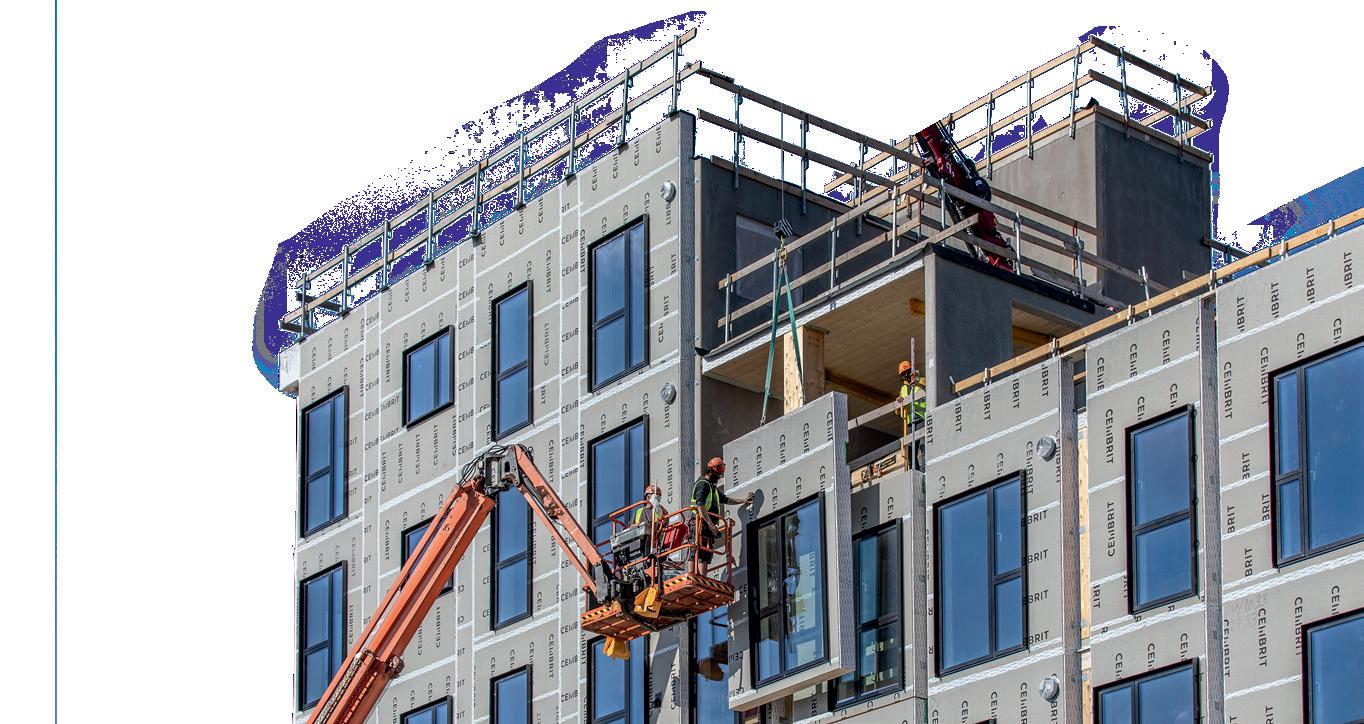
3 minute read
All the energy we cannot see
Power for ventilation and cooling is a massive part of the electricity
consumption in research facilities, at hospitals and in other buildings with many installations. It is therefore important to bring focus to the often overlooked process energy which requires a crucial effort in the early design phase.
Advertisement
Technically advanced buildings comprise an essential part of our knowledge society and health system. Unfortunately, these buildings are also in an exposed position when energy prices explode, as was the case in 2022. A significant part of the explanation is found in the energy intensive processes that are fundamental for the functions of the buildings. For example, neither laboratories nor operating theatres can function safely without efficient ventilation solutions, and much of the technical equipment will also increase the need for cooling – often significantly. Here, the concept process energy is used –also known from industrial production.
According to a report from the Danish Building and Property Agency, process energy is responsible for approx. half of the total energy consumption in laboratory buildings. Even though the fee for this specific electricity consumption is lower and not subject to the same requirements in the building regulations as building energy, it still constitutes a considerable cost and a consumption that ought to be addressed seen from a climate point of view.
From the beginning, the process energy was therefore given special attention when designing the Climate Challenge Laboratory at the Technical University of Denmark.
Size does matter
Senior Project Director Erik Krøll has worked with laboratory buildings for more than 20 years, and he also has experience from the pharmaceutical industry. Process energy is one of his professional passions, and he stresses that size is paramount :
To put it very simply, you can compare air to water. It is easy to understand that the smaller the pipe you press water through, the more energy you need to use. The same principle applies for air. When laboratories require a large change of air, the smaller the pipes and shafts the air must be pressed through, the larger the pressure loss will be. It is of course more complicated than that, but to put it bluntly, it requires a large ventilation system to reduce the process energy.
Erik Krøll Senior Project Director Laboratories & Health Copenhagen
As Erik emphasises, it requires an early effort to create the best possible conditions to reduce this part of the electricity bill. The same considerations were at play in the design of Building 310 – the neighbour of the Climate Challenge Laboratory. For both projects, Artelia was responsible for design management and was able to influence the design from the beginning.
Sizes like these do, of course, have a decisive influence on the entire design of the building. The project therefore also contains an aesthetic dimension to be solved in collaboration with the architects – something which is impossible to adjust late in the process and which must as a minimum be considered in the conceptual design, says Erik.
When the volume is increased, is has a corresponding effect on the technical rooms that are twice the normal height in both the Climate Challenge Laboratory and in Building 310. This illustrates in itself what kind of influence minimising the process energy has on the building design.

A reason to cut corners
The pressure loss that causes the electricity consumption to skyrocket will increase further if air is pressed through a 90-degree angle where turbulence will occur – one of many reasons why the building’s energy consumption will become unnecessarily high if the challenge is not addressed.
These corners may cost a lot on the energy budget. We will therefore make sure to establish bends instead of angles while creating an intelligent pipe design to lead the air around the corner, Erik explains and mentions a last important aspect of the ventilation design :

To stay in the water metaphor, there are many rocks in the river such as heating and cooling surfaces. In some laboratories, there might also be a need for a HEPA filter that increases the pressure loss in the entire system, and we will have to place a ventilator locally to increase air velocity again. Overall, this means that we need to create good solutions in relation to a number of components in the system.
Cooling of warm technique
Finally, Erik mentions that cooling is another important aspect in advanced buildings as well as generally :
In general, cooling has become an even more important focus area as insulation in modern buildings are better than before. This also applies to less advanced buildings such as office and housing buildings. In laboratories and similar buildings, it is an additional challenge that technology emits a lot of heat which must be reduced. This can be solved partially with the right design of the ventilation system. For that, we use several other solutions that will ensure energy efficient cooling.










